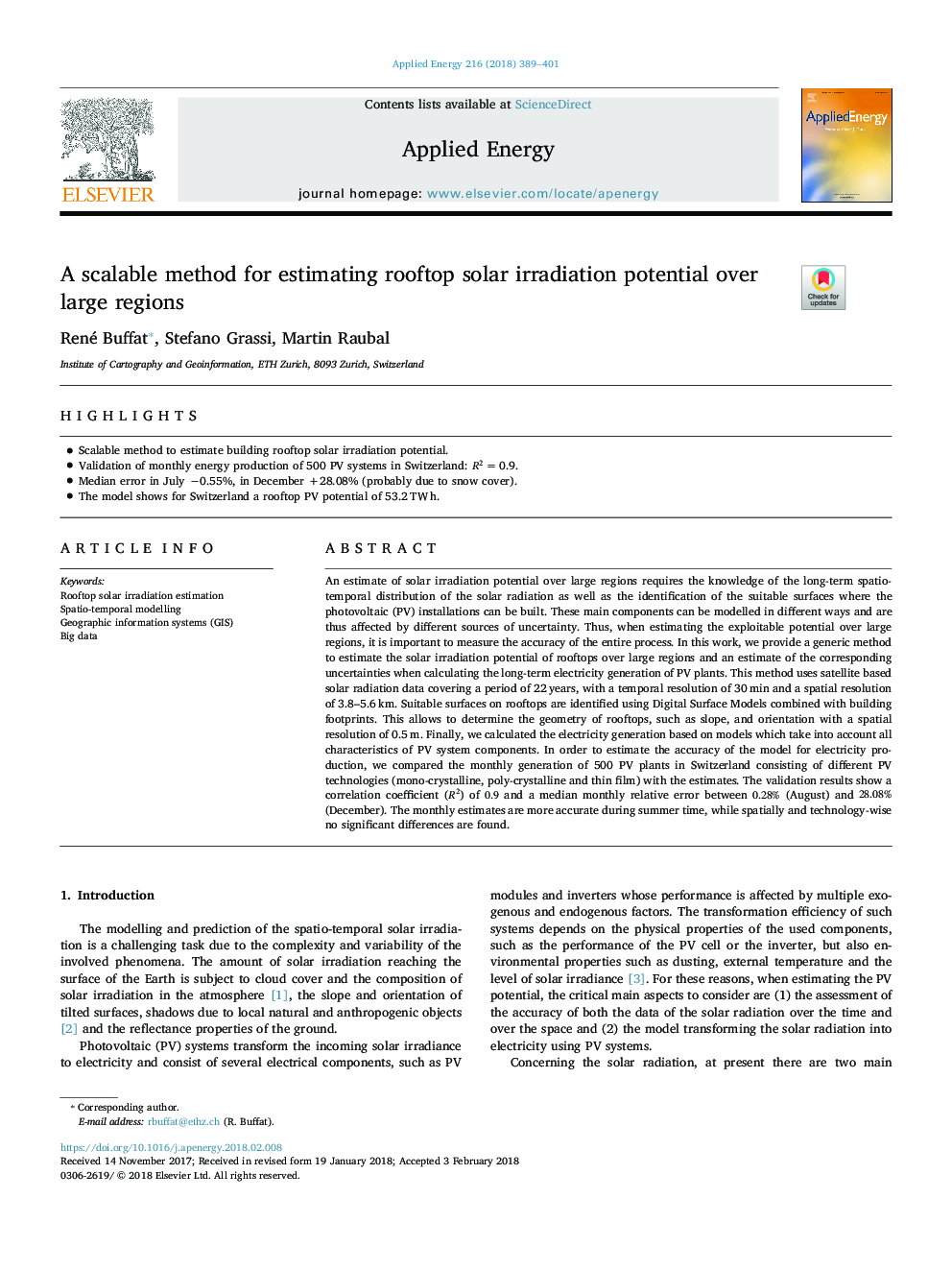| کد مقاله | کد نشریه | سال انتشار | مقاله انگلیسی | نسخه تمام متن |
|---|---|---|---|---|
| 6680571 | 1428074 | 2018 | 13 صفحه PDF | دانلود رایگان |
عنوان انگلیسی مقاله ISI
A scalable method for estimating rooftop solar irradiation potential over large regions
ترجمه فارسی عنوان
یک روش مقیاس پذیر برای برآورد پتانسیل تابش خورشید در قسمتهای بزرگ خورشید
دانلود مقاله + سفارش ترجمه
دانلود مقاله ISI انگلیسی
رایگان برای ایرانیان
کلمات کلیدی
موضوعات مرتبط
مهندسی و علوم پایه
مهندسی انرژی
مهندسی انرژی و فناوری های برق
چکیده انگلیسی
An estimate of solar irradiation potential over large regions requires the knowledge of the long-term spatio-temporal distribution of the solar radiation as well as the identification of the suitable surfaces where the photovoltaic (PV) installations can be built. These main components can be modelled in different ways and are thus affected by different sources of uncertainty. Thus, when estimating the exploitable potential over large regions, it is important to measure the accuracy of the entire process. In this work, we provide a generic method to estimate the solar irradiation potential of rooftops over large regions and an estimate of the corresponding uncertainties when calculating the long-term electricity generation of PV plants. This method uses satellite based solar radiation data covering a period of 22â¯years, with a temporal resolution of 30â¯min and a spatial resolution of 3.8-5.6â¯km. Suitable surfaces on rooftops are identified using Digital Surface Models combined with building footprints. This allows to determine the geometry of rooftops, such as slope, and orientation with a spatial resolution of 0.5â¯m. Finally, we calculated the electricity generation based on models which take into account all characteristics of PV system components. In order to estimate the accuracy of the model for electricity production, we compared the monthly generation of 500 PV plants in Switzerland consisting of different PV technologies (mono-crystalline, poly-crystalline and thin film) with the estimates. The validation results show a correlation coefficient (R2) of 0.9 and a median monthly relative error between 0.28% (August) and 28.08% (December). The monthly estimates are more accurate during summer time, while spatially and technology-wise no significant differences are found.
ناشر
Database: Elsevier - ScienceDirect (ساینس دایرکت)
Journal: Applied Energy - Volume 216, 15 April 2018, Pages 389-401
Journal: Applied Energy - Volume 216, 15 April 2018, Pages 389-401
نویسندگان
René Buffat, Stefano Grassi, Martin Raubal,
